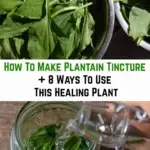
Healing herbs and wild medicines are all around us.
They are to be found in meadows, forests, even our own backyards! And we should never underestimate their potential.
Some of our favorites that we eat and/or drink regularly as herbal teas, are dandelion leaf, goosefoot, nettle, raspberry leaf, horse tail and, of course, plantain.
We are referring to the plantain that is not related to the banana in any way. Chances are good that you will recognize it, even if you have never used it before.
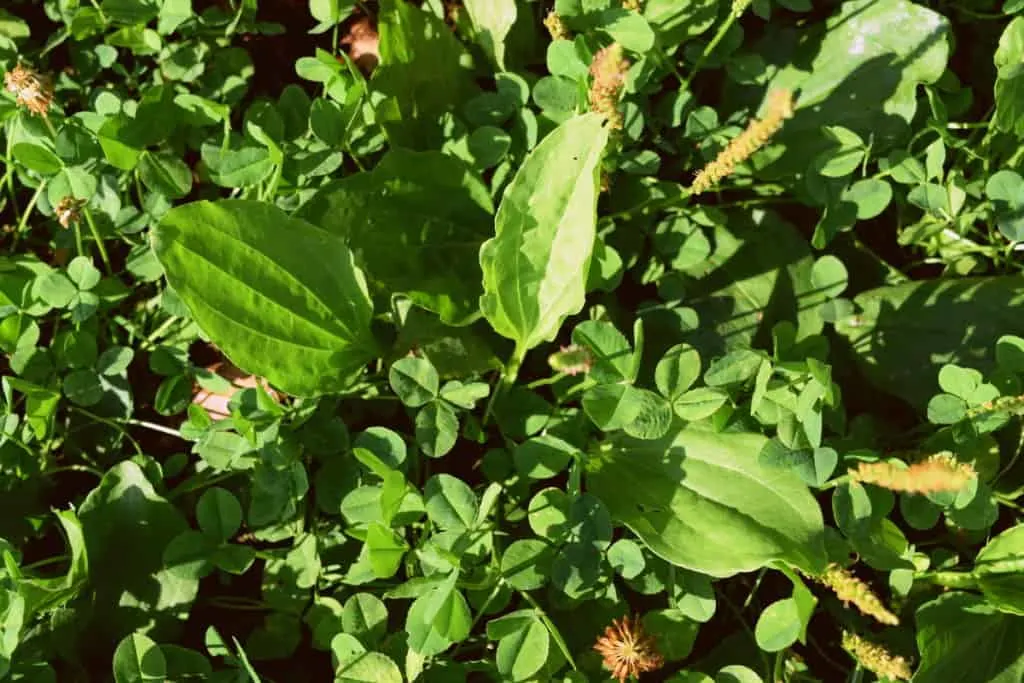
Plantago lanceolata (ribwort plantain) and Plantago major (broadleaf or greater plantain) are edible garden weeds that not only have numerous health benefits, they also happen to be highly underused in modern times.
So, how does one get started with opening up to the wonders of this nature’s apothecary?
Develop a keen interest in plants, then find a safe, chemical-free place to forage, and start snipping and plucking away!
Pick up a copy of this book to dive deeper into the matter: The Forager’s Harvest: A Guide to Identifying, Harvesting and Preparing Edible Wild Plants
How to harvest plantain
After you have identified the plantain leaves, and observed just how much there is to harvest, all you have to do now, is to remove the leaves from the base of the plant.
You can do this either by hand, or with garden scissors.
If you are using the leaves fresh, proceed as the recipe you are following indicates. However, if you are drying them for later use, rinse when necessary and hang them to dry in bundles, or use a dehydrator in case you have one.
How to make a plantain tincture
A healing tincture made of plantain leaves is often used to treat sore throats and dry coughs, just as it helps boost immunity, especially during the colder months.
There are several ways to go about preparing a tincture, but the basics are essentially the same. Simply add the herb to a strong alcohol and let it sit for a month, in a dark place, then strain and use only as necessary.
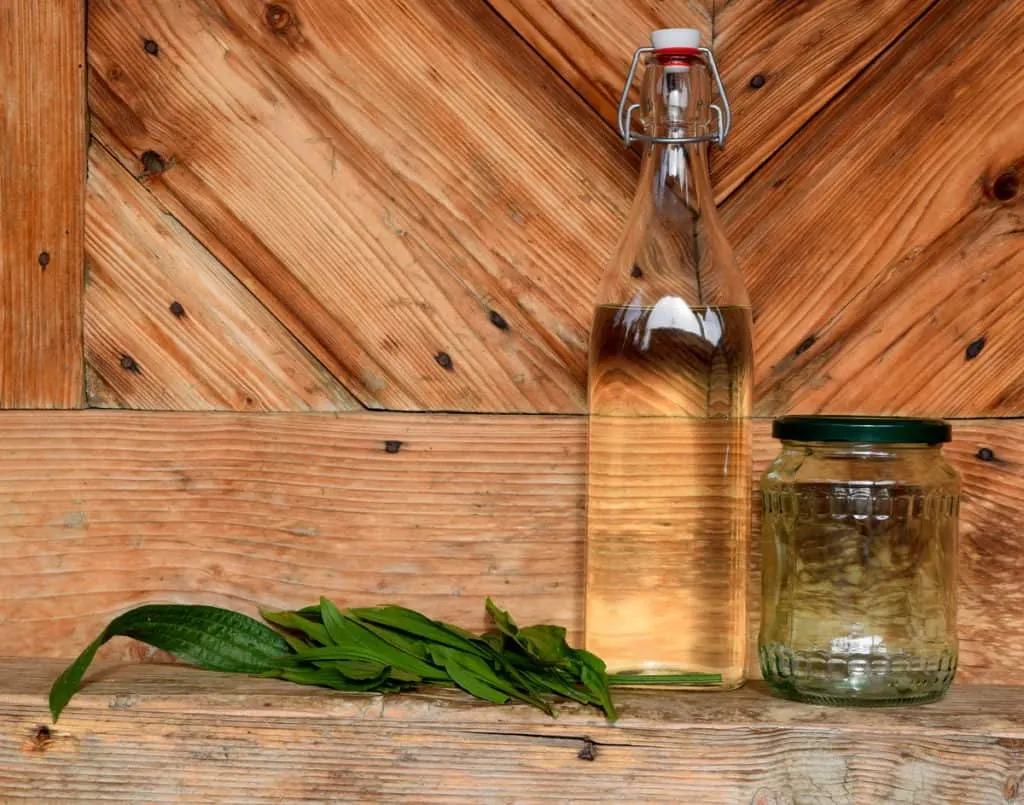
Here’s our step-by-step recipe for creating a plantain tincture:
Step 1
Harvest fresh plantain flowers (broadleaf and/or ribwort).
Using what grows locally is one of our first rules of foraging, and in this case it is useful to know that they have very similar properties and can be used interchangeably, as well as by combining their powers.
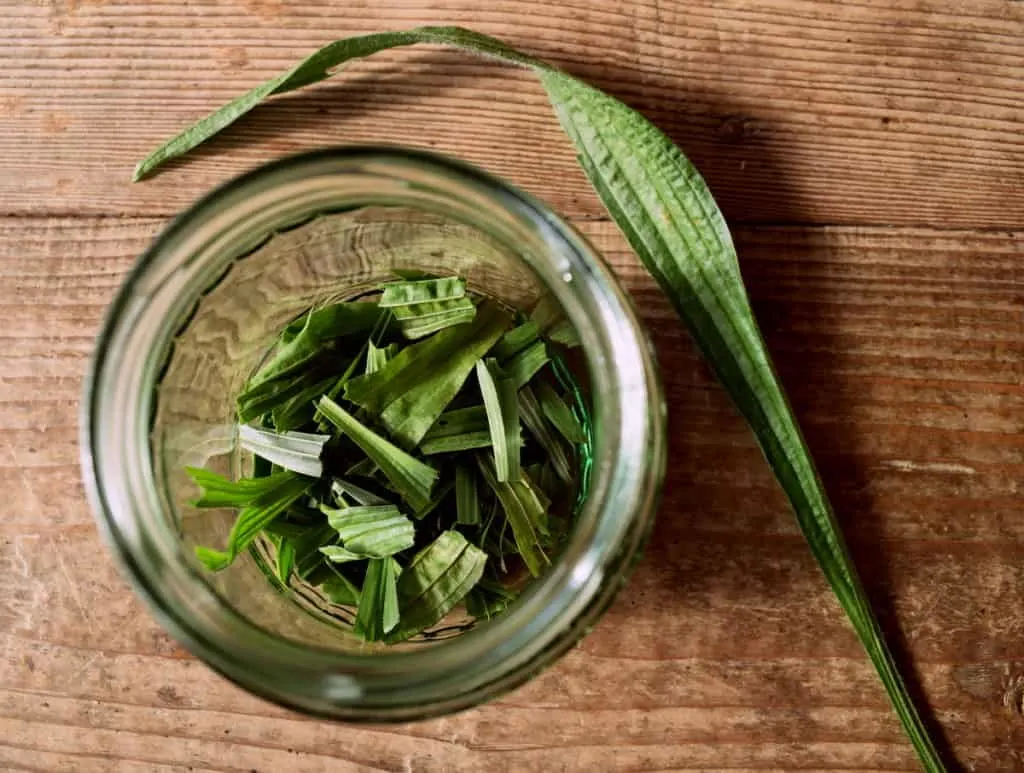
Step 2
Rip the plantain leaves by hand, or grind them in a mortar and pestle (wet or dry), and add them to a sterilized jar.
Step 3
Pour in the vodka (grain or potato-based) or brandy (fruit-based) in a 2:1 ratio (2 parts alcohol, 1 part fresh plantain).
The need to be exact does not apply, use your intuition and wise judgement, as plant properties will vary from specimen to specimen and season to season.
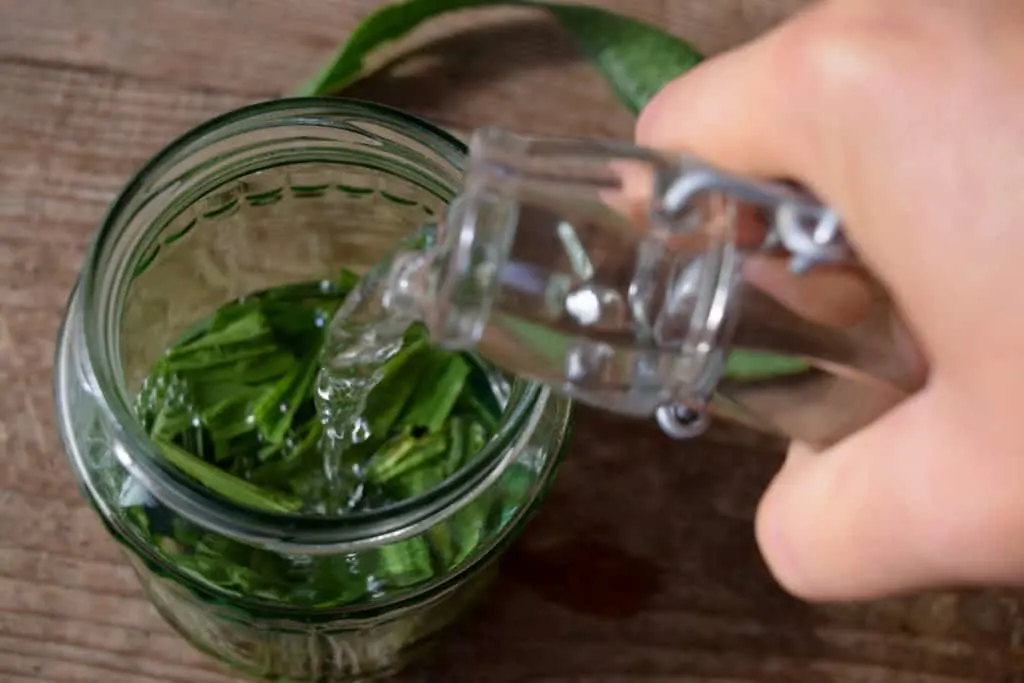
Step 4
Label the jar and seal with a tight-fitting lid. Leave it to sit for 4-6 weeks in a dark place.
The adult dosage of plantain tincture is 1 ml, not more than 3 times a day.
When in doubt, ask an herbalist “How much should I take…?” and you’ll find differing answers. You’ll find more thoughts on dosage here.
We can’t stress enough how important it is to label the jar!
At some point, all of your herbal tinctures will look similar, yet they all have very different properties and uses.
In our natural medicine cabinet we also have shepherd’s purse tincture. Not for the lungs, but for times of regulating bleeding and dealing with hemorrhoids.
And there is yarrow tincture for improving circulation and toning varicose veins.
Better be safe than sorry – label your jars properly in order to avoid any medical mishaps.
Other ways to use plantain
Rather than remove all the plantain in your yard, harvest them for herbal remedies instead!
Learning to forage is one of the most empowering acts we can take, in the pursuit of self-reliance and self-sufficiency.
After correctly identifying a handful of beneficial wild plants, it is time to put them to use in the form of infused oils, salves, tinctures and poultices.
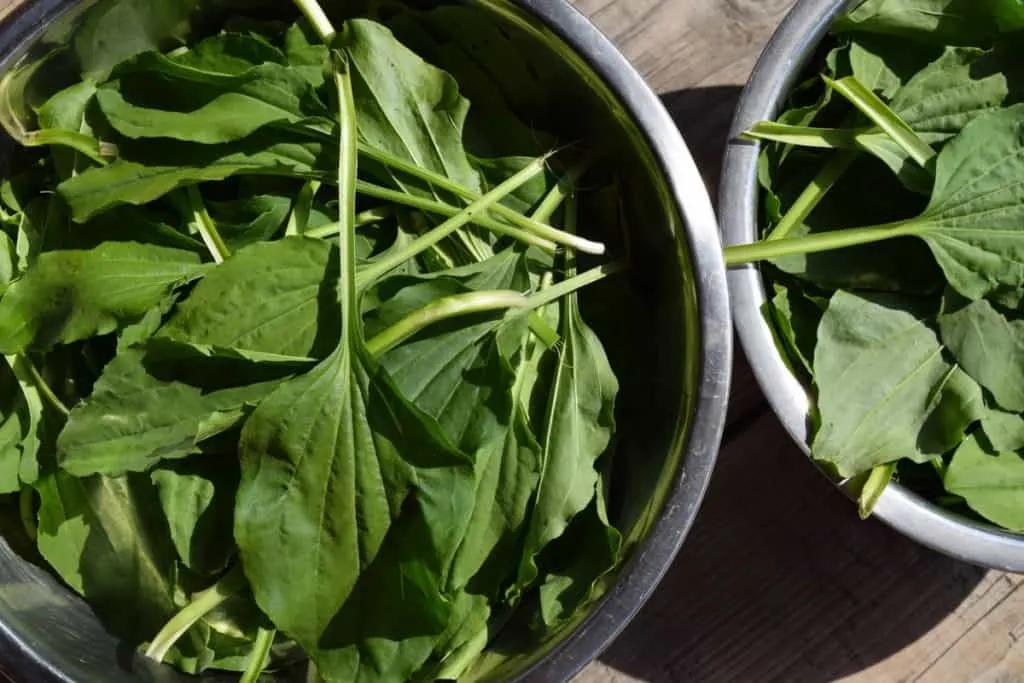
Plantain poultice
Summer is the best time to use a fresh plantain poultice as the timing falls right in line with insect bites and stings.
If you have an itchy, or irritated bite, simply grab a plantain leaf, rinse it if you have time, and chew it up into a green mash. Then apply to the bite and cover it with a bandage or cloth, leaving it on the affected area for a few hours. Reapply as often as necessary until the itching and redness goes away.
Plantain is slightly bitter, yet pleasant tasting. More than that, it is going to heal your wounds.
A plantain poultice feels great on cuts and scrapes too.
For bites in winter, keep a plantain salve handy!
Plantain-infused oil
Beyond the basic “chew and apply” poultice, the next easiest way to use plantain is to infuse it in a carrier oil (olive, almond, coconut, avocado).
Plantain-infused oil is extremely useful in healing minor skin irritations, as well as being a wonderful soother for burns, bites, cuts and scrapes.
As you get closer to your land and start harvesting wild herbs, you’ll find a use for most everything green. For instance, comfrey makes an excellent fertilizer – never underestimate the power of weeds!
With a supply of fresh leaves, all you need to do to make plantain-infused oil, is:
- harvest a bunch of leaves on a dry afternoon
- rip the leaves (or cut with scissors)
- leave them to wilt overnight on a clean cloth
- add them to a glass jar
- fill with extra-virgin olive oil, or another oil of your choice
Then, store the jar in a dark, cool place for about a month to six weeks. Straining the oil, now you are free to add the infused oil to other recipes, or rub on your skin as necessary.
Plantain-infused vinegar
For cooking, cleaning, healing, or even doing the laundry, there is an infused vinegar that is right for every job.
During the summer months, it may happen that the sun is more than your skin can bear. The end result being a sunburn.
Soaking fresh, or dried, plantain leaves in apple cider vinegar will give you a natural solution to relieve the pain quickly.
You can also use it as a hair rinse for a dry, itchy scalp.
Learn how to make your own herb-infused vinegar here.
Lavender-plantain lotion
Plantain is known to heal inflammatory skin conditions, and is particularly powerful in treating eczema.
It does take a certain amount of planning (and waiting) to make your own lotions, so when the plantain in your yard is growing like crazy, harvest as much as you can – and dry them for later use, just in case you happen to be too busy with canning, gardening and life at hand.
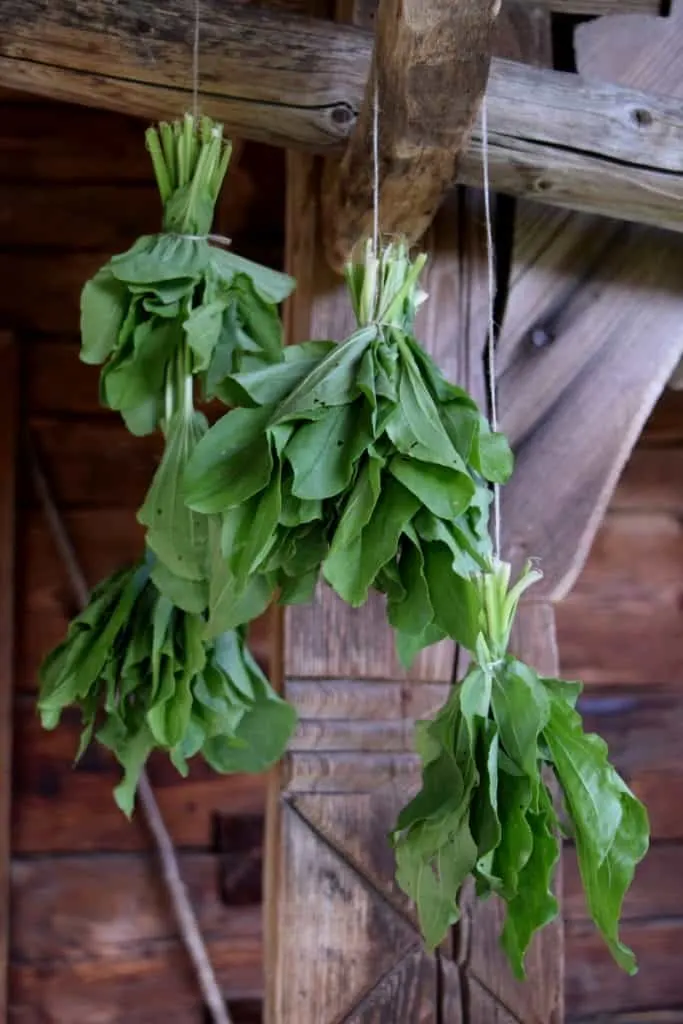
First, you’ll need to make a plantain-infused oil which needs to steep for 4 to 6 weeks. Then you can go ahead and make a relieving lotion.
Find the entire recipe here: Lavender Plantain Lotion @ The Nerdy Farm Wife
Plantain lip balm
If you are tired of menthol flavored lip balm, perhaps it is time for a change?
While there are many alternatives to be found, there is nothing better than a DIY session of creating your own lip balm with ingredients you know and trust.
To make a homemade, restorative lip balm you will need dried calendula, comfrey and plantain. It also takes:
- beeswax
- shea butter
- cocoa butter
- castor oil
All of these are wonderful ingredients to have on hand for making your own cosmetics and herbal remedies.
Get ready to make your own Herbal Healing Lip Balm Recipe With Calendula, Plantain and Comfrey.
Plantain bath salts
At the end of a long day, whether you are cutting firewood, gardening, chasing after chickens and goats, or taking care of everyone and everything in the home – sometimes all you need is a good soak to revive your spirits.
Make your own relaxing bath salts with essential oils, or without, but don’t forget to add some roughly chopped plantain leaves (dried or fresh) for the ultimate skin care.
You can also add some lavender flowers to help you wind down before bed.
If using plant parts, make sure to place all ingredients in a tightly woven cotton bag, for safe removal (not down the drain) when you are done.
Plantain lotion bars
If dry skin has you itching for a natural remedy, look no further than a homemade moisturizing lotion bar with just 3 ingredients.
Shea butter, coconut oil and beeswax is all that you will need for a very basic lotion bar. Take the liberty to add in that plantain-infused oil for the greatest benefit to your skin.
Plantain salve
When you are ready to add more healing ointments to your natural first aid kit, jump straight into making a plantain salve.
It isn’t the easiest thing in the world to concoct, yet the end result will be amazing, trust us on this!
Grab all of your ingredients – fresh or dried plantain leaves, coconut oil, beeswax and tea tree or lavender essential oil, and you are ready to get cooking.
This plantain salve recipe will have your skin healing in no time at all.
With all these amazing uses, it is easy to forget that you can eat plantain too!
Use the young leaves chopped in salads, toast the plantain seeds or use it as a winter remedy to ease the symptoms of a dry cough.
Plantain is likely to grow where you are, but won’t always be available when you need it.
Be prepared – forage in summer and get ready for creating salves, lotions and lip balm in winter.
Naturally, dried plantain can be bought online too, in a pinch. Natural remedies are never far out of reach.

Get the famous Rural Sprout newsletter delivered to your inbox.
Including Sunday ramblings from our editor, Tracey, as well as “What’s Up Wednesday” our roundup of what’s in season and new article updates and alerts.


